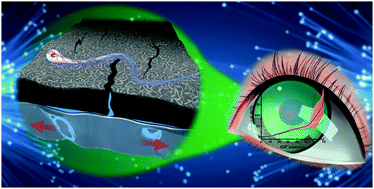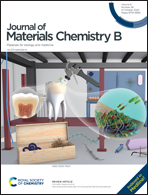Application of graphene nanowalls in an intraocular pressure sensor†
Abstract
As the second leading cause of blindness in the world, glaucoma is mainly caused by persistent high intraocular pressure (IOP) that compresses the optic nerve and causes permanent damage. Noninvasive continuous monitoring of IOP is an essential method for the diagnosis and treatment of glaucoma. In this paper, we propose a new strain gauge material based on graphene nanowalls (GNWs) for continuous monitoring of IOP with high sensitivity in a wide range. By simulation, we studied the relationship between the strain of the cornea and contact lens and IOP. The structure and the location of the GNWs in the contact lens are optimized. A method for transferring GNWs on contact lenses with the assistance of a gold film is proposed. The simulated tests on porcine eyes in vitro show that the resistance response of the device to normal IOP fluctuation reaches 1.014 kΩ mmHg−1. Its normal sensitivity of 42 250 ppm mmHg−1 and the response range of 0–75 mmHg are far more than those of most noninvasive methods reported before. This study shows the enormous potential of GNWs for continuous IOP monitoring with high sensitivity and low power consumption.



 Please wait while we load your content...
Please wait while we load your content...